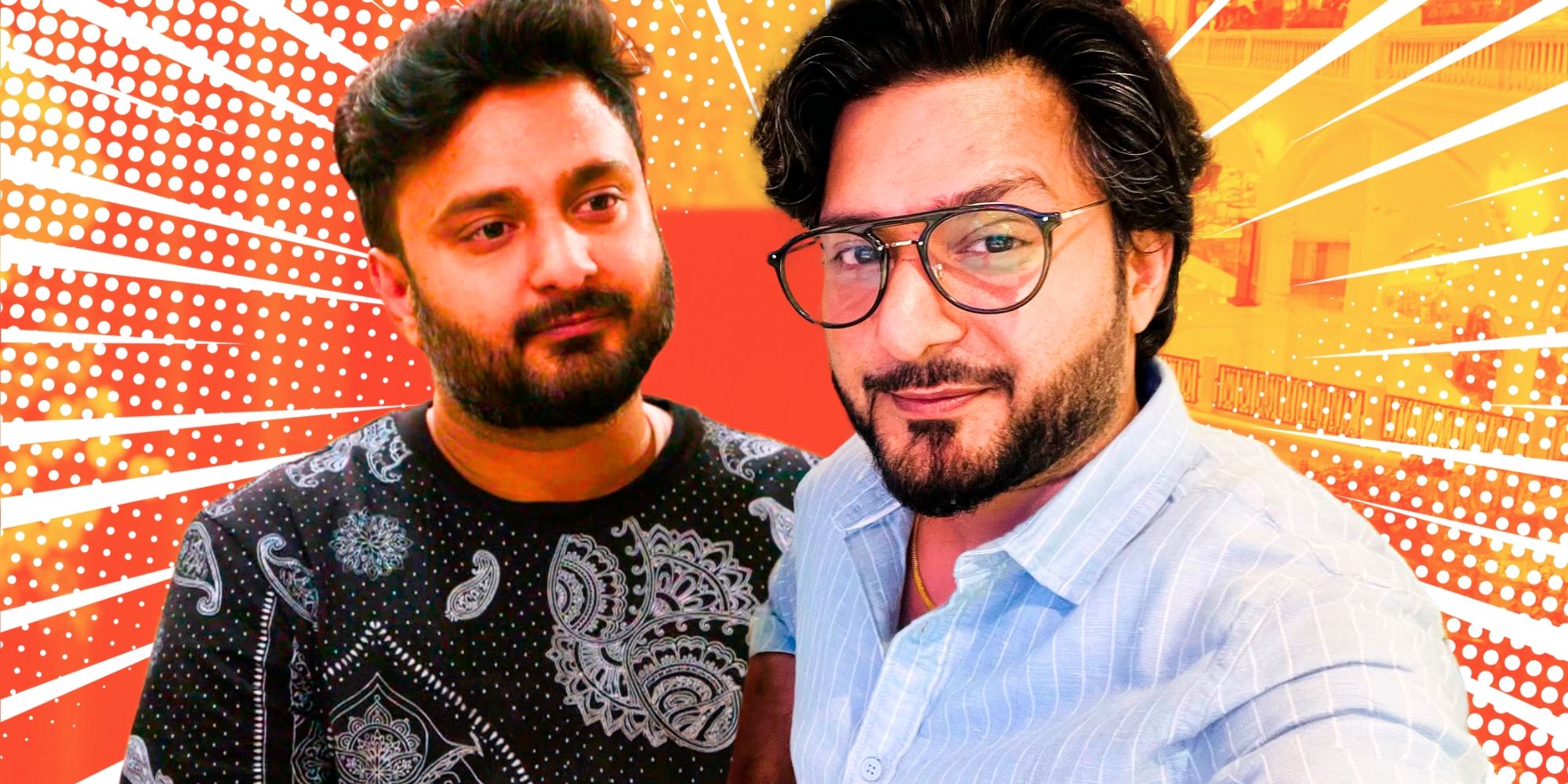Entertainment
Disney Television Animation Celebrates 40 Years of ‘Wildly Diverse’ Family Entertainment

With breakout hits like “Big City Greens,” “The Proud Family: Louder and Prouder” and “Phineas and Ferb,” Disney Television Animation has been setting the gold standard in kids’ animation for
40 years.
DTVA was formed on the heels of challenging outcomes with features “The Fox and the Hound” and “The Black Cauldron.” Initially, DTVA was restricted from using established Disney legacy characters, but nevertheless had huge successes with new shows like “The Wiggles” and “Adventures of the Gummi Bears,” both of which became popular in syndication.
As time went on, DTVA was able to use its limited rights to create shows like “DuckTales” and “Tale Spin,” which featured Disney characters. Today, the slate has evolved to include shows that travel across Disney’s streaming, linear and digital platforms, including Disney+, Disney Channel, Disney XD, Disney Junior and Disney Channel YouTube. Short-form programs like “Chibi Tiny Tales,” which re-creates a selection of Disney’s iconic characters in the style of Japanese chibi animation, is one of the most-watched shows on Disney Channel YouTube with 8 million monthly viewers. The series recently celebrated its 100th episode.
DTVA is also expanding on the popular Disney Channel original live-action movie franchise “Zombies” with “Zombies: The Re-Animated Series,” which will air on both Disney Channel and Disney+ in
the summer.
“We have a wildly diverse development slate because we don’t have a house style,” says Meredith Roberts, executive vice president, television animation, Disney Branded Television. “Our styles are creator-driven, so that allows for real support of the artist or creator to fulfill his or her vision. Anything is possible, whether it’s 2D, CG, mixed media or stop motion.”
The studio’s shows reflect that open approach. Their programs include CG (“Monsters at Work”), hand-drawn 2D (“Big City Greens”), rig-based 2D (“Moon Girl and Devil Dinosaur”) and stop-motion (“Mickey Saves Christmas”).
Roberts continues, “We really try and solve all the problems and develop it. We look at the scripts and the story arcs. Every project has to have a strategy behind it that will complement the slate and separate it from other things. Each project has a distinct swim lane to attract an audience. And we’ve learned to meet the kids where they are, in terms of streaming and YouTube.”
DTVA also sought to meet kids where they are by making their audience — which is made up of the most diverse generation in history — feel seen, with series such as “Elena of Avalor,” based on Disney’s first Latina princess, and “The Proud Family,” focused on the life of a teenage Black girl.
As new ideas for shows are developed, Emily Hart, senior VP, development & current, DTVA and a 20-year-plus veteran of the company, and her team know one audience will make their decisionsfor them.
“We do have an amazing insights team that are constantly in the field, giving us general information about how kids are watching content, what they’re into,” Hart says. “Some of those things are evolving, as we know the ways kids consume content is changing. But there are some universal truths about kids, and it’s great to have that reinforced. Kids still like a lot of the same things that we like. So, there’s a combination that we’re always tracking.”
Hart says that the insights team goes into the field “with every new idea, and we do pilot testing. We get to sit down and talk about the content, and we invite our creators in so they can see the kids talking about it because they’re the audience and they’re the truest test of if the story is going to work.”
Those creators who come to DTVA often stay for a long time, partnering with the studio on a variety of different projects or expanding on a hit and reimagining it for the next generation of viewers. “The Proud Family” was a standout in 2001 on Disney Channel. Creator and executive producer Bruce W. Smith is now working on the Emmy-winning “The Proud Family: Louder and Prouder,” which is based on the original series. The show follows Penny Proud as she navigates family life and her own childhood.
Smith is a CalArts alumni and co-founder of Jambalaya Studio, an animation company focused on creating racially and ethnically diverse projects for all mediums. It’s made over 50 episodes for Disney Channel’s “The Proud Family” as well as “The Proud Family Movie.”
“Being at DTVA has allowed me to realize all my artistic dreams,” says Smith. “As a kid, you always have hopes, thoughts, dreams, ideas and characters that can help lay out those ideas in your head. Disney has allowed me to really tap into my creative instinct.
Smith continues: “At the end of the day, you have to learn how to trust yourself. Meredith Roberts has been a true shepherd for me in all of this, allowing me to stretch my wings. Because of her belief in me and my ideas, she’s really allowed me to blossom as an artist. All that happened at DTVA.”
“Phineas and Ferb” co-creator Dan Povenmire has returned to DTVA with “Hamster & Gretel,” a superhero show based on the adventures of a young girl and her furry friend. With his “Phineas and Ferb” co-creator, Jeff “Swampy” Marsh, Povenmire also co-created and executive produced Disney’s “Milo Murphy’s Law.” Povenmire was co-creator, executive producer and supervising director of
Disney+’s original animated adventure movie “Phineas and Ferb the Movie: Candace Against the Universe.”
“They really seem to be a place that welcomes your ideas,” Povenmire says of DTVA. “They want to find people with real strong ideas of the stories they want to tell, and then they let them tell those stories for the most part. They seem to put storytelling and characters over anything. With [‘Phineas and Ferb’], we would write jokes for the kids and the adults in the room because we knew the adults would be there too. We were just careful not to do any double entendres.”
Co-viewing, the viewership that happens when adults sit down to watch a DTVA show with the kids in their lives, is part of the studio’s secret sauce and long-term strategy. Many of the shows are written with jokes and plot points for both audiences so both groups will return.
“We double down on the kids and family space,” says Roberts. “We’re not just dipping a toe in the water. We’re diving in. I think we’ve seen a lot of churn with the competition, who just don’t have the patience to develop and are for this audience, which is a very specialized kid audience and co-view audience.”
Ayo Davis, president of the Disney Branded Television unit that includes DTVA, says the division is a “driving force” for memorable kids and family entertainment. “All of us at Disney Branded Television are so proud of the studio’s 40-year legacy as it continues to entertain future generations with shows like ‘Kiff,’ ‘Big City Greens’ and ‘Mickey Mouse Clubhouse,’” Davis says.
Roberts reflects: “I think one of the things I’m most proud of is how stable DTVA has been for the last 20 years despite a lot of outside churn. Many of our crews feel that Disney is their forever home. I think the excitement they have to illustrate and create with this brand has been terrific because it’s harder to be funny and clean. And nowhere are we tearing down people to get that laugh. I think that’s the beauty of a Disney animated show.”









